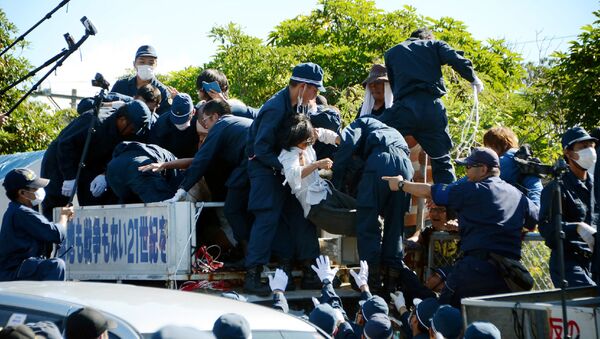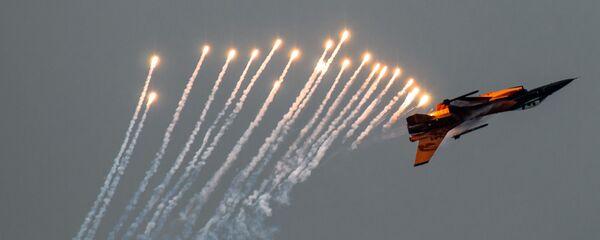New US military landing pads in Okinawa built by Japan have enraged demonstrators, who are blocking roads to protest the expansion of what they view as a foreign occupation by the United States military, abetted by the government of Japanese Prime Minister Shinzo Abe.
The frustration of Okinawans threatens to spill over, after the April murder of a local woman by a former US Marine working on the island as a defense contractor. The situation became worse after an intoxicated US serviceman was responsible for a tragic car accident involving a local resident.
Over 50,000 US nationals, including 30,000 military personnel and civilian contractors, are currently stationed in Okinawa, a critical military staging ground that enables Washington to assert influence throughout the eastern Pacific region.
Although the base has long been unpopular with local residents, tensions between Okinawans and American personnel are at their highest point since 1996, when the US and Japan last agreed to relocate a number of troops, following the rape of a 12-year-old schoolgirl by three US soldiers that led to a similar wave of mass demonstrations.
The Pentagon, speaking through Lt. Gen. Lawrence Nicholson, the US commander on the island, announced a 30-day curfew and a "period of unity and mourning" following the April murder of Rina Shimabukuro by a US defense contractor and former marine.
The Pentagon also returned the largest amount of territory since the 1972 appropriation of almost 4,000 hectares (15.5 square miles/40 square km) to the people of Okinawa.
However, the land return has a provision attached that has deeply angered Okinawans; "more than ever," according to the Japan Times. The plan calls for Japan to construct six new helipads in Takae, a district of the Okinawan village of Higashi with a population of fewer than 150 people that is also said to be home to more than 170 endangered species.
More disconcerting to the people has been the response by Japanese police and security forces, who do not recognize the validity of the protests and demands of Okinawans. "It feels like martial law has been imposed here. There are very large numbers of police and they often act violently."
The Japanese Ministry of Defense promised to dispatch security guards to Okinawa, following the spike in crime by US personnel, to make residents feel safer, according to the Japan Times.
Instead of the security personnel being dispatched to ensure the safety of the Okinawan people, however, the guards were dispatched to Takae, to secure the new helipad construction sites, over the protest of local residents.





